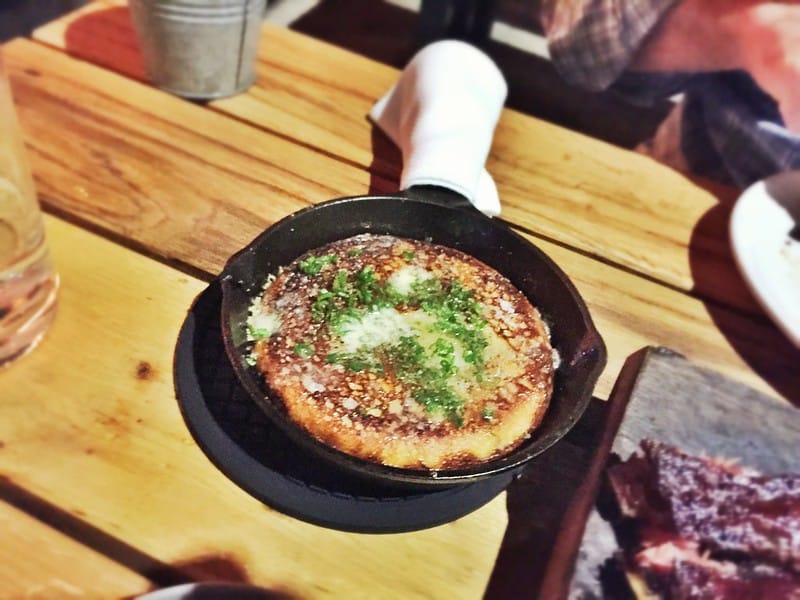Sometimes a food items that was mainly a slave food moves its way up to being a food that is loved throughout a group of people. This is very true for the Hoe Cakes of the South of the United States and the similar Johnny Cakes of Rhode Island in the North.
Hoe cakes and Johnny cakes are basically the same thing. The only real difference is where they are from. The hoe cake was a Native American recipe that American slaves took on and cooked on an agricultural hoe. There are variations of this bread found as far north as New England, and as far south as the Caribbean.
While hoe cakes and Johnny cakes can be considered the same thing, I did find an old book that disagrees, Canoe and Camp Cookery by H.H. Soulé. In Chapter VI, the author gives a recipe for Johnny cakes, and then states that to make hoe cakes, you just add more warm water. The author also states that while hoe cakes are made on a griddle, Johnny cakes are bakes in the coals of a fire.
Who created the first Hoe Cakes?
Native Americans had the first how cake recipe. While they were not the same recipe we see today, or even the same recipe that was used 300 years ago, the recipe for this dough was first used by Native Americans prior to Columbus.
This early recipe was adapted by slaves during antebellum America to be cooked easily with the tools they had. It was then adapted with more modern ingredients and altered by many groups in the Eastern United States and the Caribbean.
Where do Hoe Cakes get their name?
A hoe cake is not named after the agricultural hoe. While it may have been common practice for slaves to make a small fire, grab their hoe, and make some hoe cakes for a meal, the agricultural hoe was not the original meaning of a hoe cake. Hoe is a colloquial term for griddle. It may have referred to a griddle with a long arm that is placed over a fire.
Slave Hoe Cake Recipe
A hoe cake is very simple. Enslaved people did not usually have access to good quality ingredients. They would have been given a ration of coarse cornmeal. They would have had access to water. That is all you need for these cakes. A little salt would enhance the flavor, and if you have it some fat to fry them in.
Combine the cornmeal and water, add salt if you have it. Let it sit for a while, half an hour should do. This will allow the corn to absorb the water. Toss whatever grease you have onto a hot griddle (aka a hoe) and pour the mixture onto the griddle. Let it cook a couple minutes, flip it, and cook a couple more minutes. It should be golden brown. Serve it up.
Modern Hoe Cake Recipe
There are many modern hoe cake recipes when you search the internet. Most have all purpose flour in them, with a common mixture being half all purpose flour and half fine ground cornmeal. The fine ground cornmeal allows the corn to absorb the water quicker and you don’t need to let it sit so long. They also often add sugar, eggs, and buttermilk. All things that a slave might not have had so easily.
Here is a modern recipe found at Spice Southern Kitchen.
Rhode Island Johnny Cake
In Rhode Island there seems to be a huge debate about these pancakes. Are they Johnny cakes, or Journey cakes? Do you use whitecap flint, or white dent corn? Do you use warm or boiling water? For more about this debate see this article at New England Today. Kenyon Grist Mill claims to be the original recipe, but as we have already discussed, this recipe predates the mill, or Rhode Island, or even Columbus.
Caribbean Johnny Cake
Slavery was not limited to the United States, and this special food was not limited to slaves in the US either. If you head south of the United States you end up in the Caribbean. Many of the islands have some version of the Johnny cake. These recipes are more of a fried roll, than a thin pancake. Here is one recipe I found at Uncommon Caribbean.

